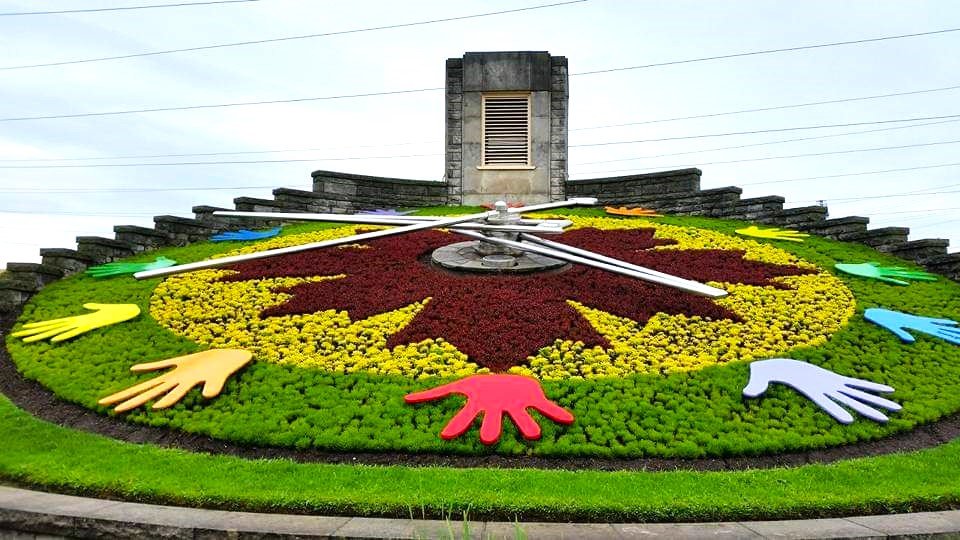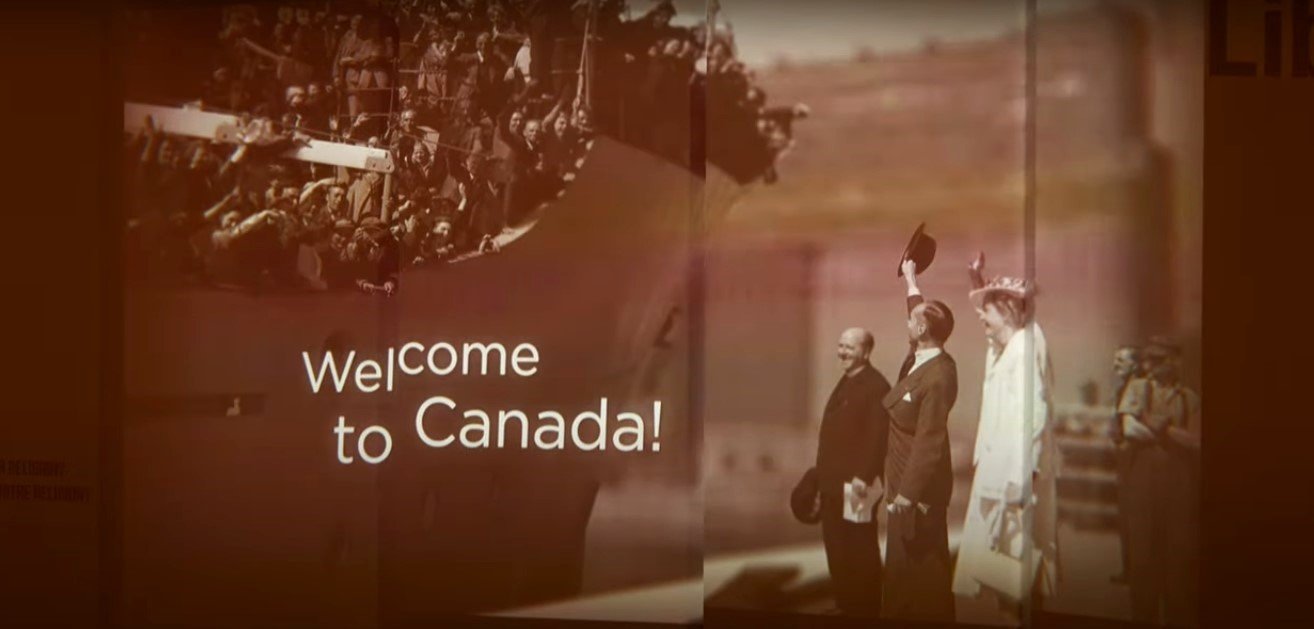The Floral Clock Niagara Falls is a unique and captivating attraction, a living timepiece that offers a serene counterpoint to the raw power of the falls. Just a short drive from the thundering cascade, along the scenic Niagara Parkway, you’ll find this quieter marvel, a vibrant tapestry of colors and meticulous craftsmanship. Imagine a clock, not of gears and metal, but of blooms and blossoms, meticulously arranged to tell the time in a truly unique and beautiful way.
The Floral Clock Niagara Falls is a harmonious blend of horticultural artistry and engineering precision, a testament to both nature’s creativity and human ingenuity. It’s a place where you can pause, breathe in the fresh air, and appreciate the delicate beauty of nature amidst the grandeur of Niagara. Whether you’re a first-time visitor or a seasoned traveler, the Floral Clock Niagara Falls is a must-see attraction, a charming reminder of the artistry and creativity that flourishes alongside Niagara’s natural wonders.
A Stroll Through History: The Origins of the Floral Clock
The Floral Clock wasn’t born overnight; it’s a product of vision and a desire to enhance the Niagara Parks experience beyond the falls themselves. Picture the 1950s: a time of post-war optimism and a growing appreciation for public gardens. The Niagara Parks Commission (NPC) was looking for ways to captivate visitors with more than just the raw power of the falls, and they found inspiration across the Atlantic, particularly in Edinburgh, Scotland, with its iconic floral clock. And so, in 1950, the Floral Clock was unveiled, a unique attraction designed to symbolize beauty, innovation, and the harmonious blend of nature and human ingenuity.
This wasn’t a small undertaking. Imagine a clock, not of metal and gears, but 40 feet in diameter, a living tapestry of blooms! The Floral Clock quickly became a symbol of the times, a testament to post-war progress and the increasing popularity of public gardens. Its creation was a collaborative masterpiece.
Horologists, the experts in clock mechanisms, designed the intricate workings of the clock itself, while horticulturists, the masters of the garden, meticulously planned the vibrant floral arrangements. Over the decades, the Floral Clock has gracefully evolved, embracing modern technology while carefully preserving its nostalgic charm. One of the most significant changes is the clock’s mechanism. Originally powered by weights and pulleys, a testament to ingenious engineering of the past, it now operates with an electric motor, synchronized with the official Canadian time signal for precise accuracy, a perfect blend of old and new.
Anatomy of a Masterpiece: Design and Engineering
The Floral Clock is more than just a beautiful display; it’s a fully functional timepiece. Its hands, some reaching up to 20 feet long, are made of lightweight aluminum to withstand the weather. Hidden beneath the colorful floral display is a complex gear system, meticulously maintained by skilled technicians to guarantee accurate timekeeping.
But what truly distinguishes this clock is its constantly evolving floral face. Every year, over 16,000 carpet bedding plants are carefully arranged to create intricate designs. The planning process begins months in advance, with horticulturists sketching themes that often celebrate local heritage, commemorate global events, or showcase natural motifs. Past designs, for example, have honored Canada’s 150th anniversary, paid tribute to healthcare workers during the pandemic, and highlighted native wildlife like monarch butterflies.
A Symphony of Blooms: The Horticultural Magic
Creating the Floral Clock’s vibrant display is a true labor of love, demanding both artistic vision and scientific precision. The Niagara Parks Commission team carefully selects plants based on their color, texture, and bloom times. Species like Alternanthera, Santolina, and Sedum are popular choices due to their hardiness and vibrant colors. To keep the clock looking its best throughout the year, it undergoes two major plantings: one in spring, featuring cool-weather favorites like pansies and tulips, and another in summer, showcasing heat-tolerant succulents and annuals.
The planting process itself is a meticulous undertaking. Workers spend weeks carefully transplanting seedlings by hand, often using a grid system to ensure each plant aligns perfectly with the design. Drip irrigation and organic fertilizers keep the garden healthy and thriving, while regular pruning maintains the crispness of the patterns. The result? A living mosaic that changes with the seasons, offering a fresh and delightful perspective with every visit.
Behind the Scenes: The Art of Maintenance
Keeping the Floral Clock looking its best is a year-round commitment. During the winter months, while the clock might appear to be resting, the Niagara Parks team is busy planning the upcoming year’s designs and nurturing seedlings in greenhouses, preparing for the spring awakening. When spring arrives, the old plants are carefully removed, and the soil is enriched with compost, ready to receive the new blooms. Summer brings daily checks for pests and proper hydration, ensuring the vibrant display thrives in the warmer weather. As autumn approaches, the team prepares the clock for its winter “rest,” strategically incorporating hardy evergreens to maintain some visual interest.
Maintaining this living masterpiece isn’t without its challenges. Unpredictable weather and hungry wildlife—deer are frequent visitors!—require constant vigilance and adaptability. Yet, the Niagara Parks Commission’s unwavering dedication ensures the clock remains immaculate, a testament to their horticultural expertise. Here’s a fun fact: The clock’s face is subtly angled towards the sun. This clever design minimizes UV damage to the plants and enhances visibility, especially for photographers looking to capture its beauty.
Experiencing the Floral Clock: Tips for Visitors
Location and Accessibility
Located at 14004 Niagara Parkway, the Floral Clock is easily accessible by car, bike, or tour bus. Parking is free, making your visit even more convenient, and the site is fully wheelchair-friendly, ensuring everyone can enjoy this beautiful attraction. Since it’s part of the Niagara Parks Botanical Gardens, you can easily combine your visit with a leisurely stroll through the adjacent rose garden or a fascinating tour of the nearby Butterfly Conservatory, creating a full day of natural exploration.
Parking
Best Time to Visit
The Floral Clock is a delight to behold year-round, but its floral designs are at their absolute peak from May to October, when the blooms are most vibrant and abundant. To make the most of your visit, especially during the busier months, try to arrive early in the morning. Not only will you avoid the larger crowds, but you’ll also be treated to the soft, beautiful morning light, perfect for photography. And don’t miss the “chime” experience! Every quarter hour, a melodic bell rings out, adding a delightful auditory charm to the already stunning visual spectacle.
Photography Tips
If you’re hoping to capture the perfect photo of the Floral Clock, here are a few tips to keep in mind. The viewing platform directly opposite the clock offers the best vantage point to see the entire design. A wide-angle lens is ideal for capturing the full scope of the floral masterpiece, but don’t hesitate to use a zoom lens to focus on the intricate details, like the clock’s charming Victorian-inspired numerals. For truly dramatic and warm lighting, plan your visit during the “golden hour”—that magical time just after sunrise or before sunset.
How to Get There
The Floral Clock is located approximately 10 minutes north of Niagara Falls along the Niagara Parkway. If you’re coming from the falls, simply follow the scenic Niagara Parkway northbound. The clock is situated near the Niagara Parks Power Station, making it a convenient stop on your way to or from the falls.
By Car: Driving to the Floral Clock is the most convenient option. The clock is located just off the Niagara Parkway, and parking is available on-site. GPS coordinates can be used for easy navigation.
By Public Transport: While public transport options are limited, you can take a bus from the main tourist area in Niagara Falls to the nearby Queenston Heights Park and then walk or take a short taxi ride to the Floral Clock.
By Bike: For those who enjoy cycling, the Niagara Parkway offers a scenic and relatively flat ride, making the Floral Clock an excellent stop along the way.
Tickets and Admission
The Floral Clock is a free attraction, making it a great addition to any Niagara Falls itinerary. No tickets are required, and the area is open to the public year-round. While admission is free, donations are always appreciated to help maintain the gardens and clock.

Legacy and Cultural Impact
For over 70 years, the Floral Clock has become much more than just a popular attraction; it’s a true Niagara icon, a symbol of the region’s dedication to blending the beauty of nature with human innovation. It’s a familiar sight, having graced countless postcards, capturing the hearts of visitors from around the world. The clock has inspired artists, its vibrant colors and intricate designs serving as a muse for creative expression. It’s even been the backdrop for countless romantic moments, a witness to marriage proposals and other special occasions. In 2010, the Floral Clock’s cultural significance was cemented when it received the Guinness World Record for the largest floral clock in Canada, solidifying its place in the region’s rich history and cultural lore.
Nearby Attractions and Dining Options
After visiting the Floral Clock, consider exploring some of the nearby attractions. The Niagara Parks Botanical Gardens, Butterfly Conservatory, and the historic Niagara Parks Power Station are all within a short distance. Each offers a unique experience, whether you’re interested in nature, history, or just enjoying the beauty of the Niagara region.
When it comes to food, the nearby Queenston Heights Restaurant offers a charming dining experience with beautiful views of the Niagara River. If you’re looking for something more casual, there are several cafes and picnic areas along the Niagara Parkway where you can enjoy a meal surrounded by nature.
Final Thoughts : A Living Testament to Beauty and Precision
The Floral Clock at Niagara Falls is a beautiful reminder of what happens when human creativity and nature’s splendor intertwine. It invites us to slow down, to reflect, and to appreciate the ephemeral beauty of a single moment, whether it’s captured in the precise telling of time or in the fleeting bloom of a flower. Whether you’re marveling at the ingenuity of its engineering, losing yourself in the kaleidoscope of colors, or simply enjoying a peaceful moment of respite in its tranquil setting, the Floral Clock offers a timeless experience, one that stays with you long after you’ve left its floral embrace.
So, the next time your travels take you near Niagara Falls, be sure to make a detour to this hidden gem. As the clock’s hands move gracefully amidst a sea of blossoms, you’ll discover that true beauty isn’t just something you see; it’s something you feel, a connection to the natural world that resonates deep within.



